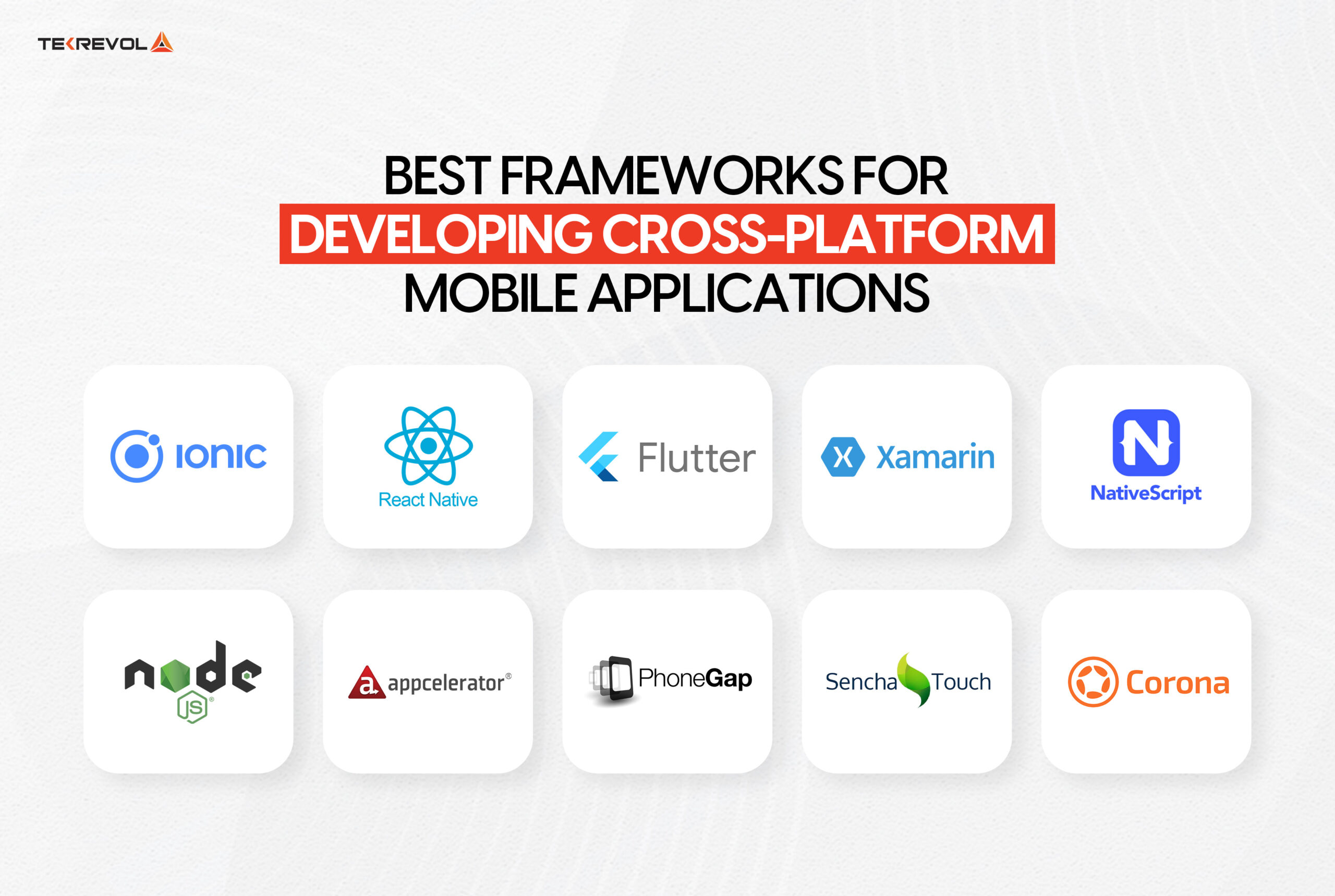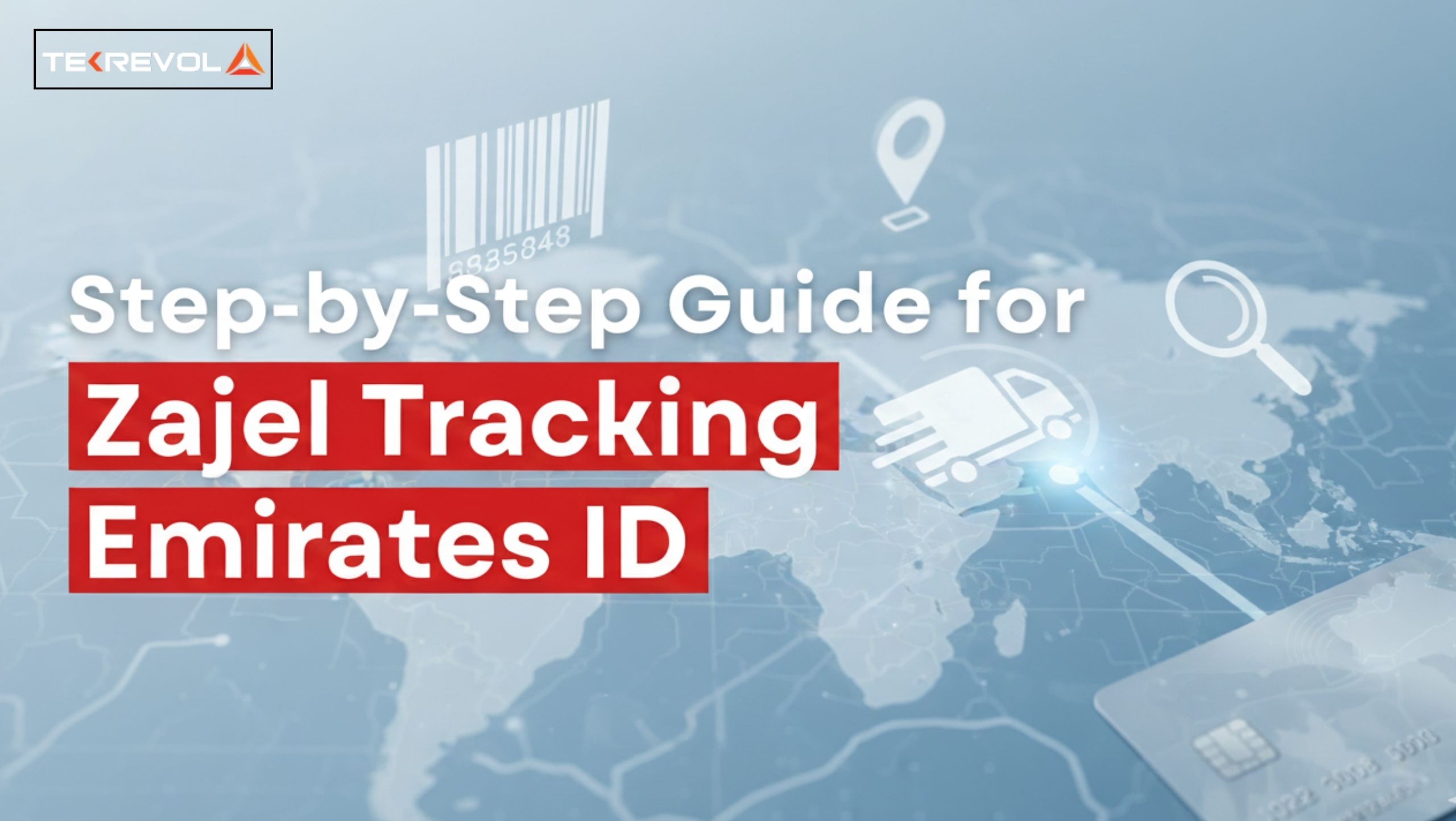Cross-platform app development has gained massive popularity in recent years due to its amazing advantages. A lot of cross-platform app development tools and frameworks have emerged in the market. This evolution has made many mobile app development companies adopt this innovative technology.
With numerous tools and frameworks available, choosing the right one can be challenging for businesses. However, you don’t need to worry; after careful consideration, we have created a list of the ten best cross-platform app development frameworks.
Before discussing these frameworks and their benefits, let’s first understand what is cross-platform app development.
Understanding Cross-Platform App Development Frameworks
Cross-platform app development refers to apps designed to operate on various computing platforms, such as Android, iOS, and Windows. In cross-development apps, developers can write a single codebase instead of using different codes for each platform. This approach has become very important in modern app development to save time and cost. Moreover, it is highly favored by leading mobile app development companies.
By using the latest mobile frameworks and tools, these companies can significantly reduce development time and cost. At the same time, they successfully maintain a uniform user experience across all platforms.
Top Frameworks for Developing Cross-Platform Mobile Applications

We have handpicked the 10 best frameworks that you can use to develop cross-platform mobile apps:
1.Ionic
Ionic is one of the most popular cross-platform software. It is built on AngularJS. Ionic enables developers to create high-quality mobile apps using a combination of HTML5, JavaScript, and CSS. With the integration of the Cordova wrapper, Ionic facilitates access to native platform features which makes it the best option for developing interactive and native-like mobile apps.
Key Features:
- Open-Source Framework: Ionic allows customization of the code structure to meet specific developer needs, significantly saving development time.
- SAAS UI Framework: Designed specifically for mobile operating systems, offering a rich set of UI components for creating robust applications.
- AngularJS Integration: Simplifies extending HTML’s syntax and integrating core functionalities, enhancing app features and components.
- Cordova Plugins: Provides access to native device features such as Camera, GPS, and Audio Recorder, expanding the app’s capabilities.
- Native-Like Performance: Delivers apps with a native-like feel, ensuring consistent performance across various platforms.
Pros and Cons:
Pros:
High Customizability: Being open-source, Ionic allows developers to tailor the framework to their needs.
Rich UI Components: Provides a variety of pre-designed components to expedite the development process.
Broad Plugin Support: Cordova plugins enable extensive access to native device features.
Native-Like Experience: This multiplatform mobile app development ensures that apps feel and perform like native applications on different platforms.
Cons:
- Performance Issues: Can experience performance lags with complex and resource-intensive applications.
- Learning Curve: It requires familiarity with AngularJS, which may pose a challenge for some developers.
- Dependence on WebView: Relies on WebView for rendering, which may not always match native performance.
2.React Native
React Native is a highly regarded mobile cross-platform framework and it is built on JavaScript. It is designed to create truly native-like mobile applications for both Android and iOS. Its strong features and extensive community support make it a popular choice among developers and businesses.
Key Features:
- Open-Source Framework: Like Ionic, React Native is open-source, benefiting from a large and active community that continually improves the framework by fixing bugs and adding new features.
- Write Once, Run Anywhere (WORA): Allows developers to write code once and deploy it across both Android and iOS, significantly reducing development time and effort.
- Native Module Integration: Enables developers to write modules in Objective-C, Swift, or Java, facilitating performance-heavy operations like image editing and video processing.
- Third-Party Plugin Compatibility: Supports a wide range of third-party plugins, such as Google Maps, enhancing app functionality.
- UI Focus: This app development cross platform emphasizes delivering a highly responsive and smooth user interface, reducing load times and enhancing user experience.
Pros and Cons:
Pros:
- Cost-Effective Development: The one-time coding approach reduces both development time and costs, making it an ideal choice for mobile cross platform frameworks.
- Strong Community Support: A vast community contributes to continuous improvements and offers extensive resources for troubleshooting and development.
- Versatile Integration: The ability to use native modules and libraries allows for performance-intensive tasks that go beyond standard framework capabilities.
- Smooth UI: Prioritizes UI performance, resulting in responsive and fluid applications.
Cons:
- Performance Concerns: While generally efficient, they may face performance issues with very complex applications.
- Learning Curve: Requires developers to be proficient in JavaScript and React.JS, which might be challenging for some.
- Dependency on Native Modules: Reliance on native modules can sometimes complicate the development process and require additional expertise.
3.Flutter
Introduced by Google in 2017, Flutter is a powerful cross-platform mobile development framework that allows developers to create high-performance applications for both Android and iOS. It’s also a primary tool for developing apps for Google’s upcoming Fuchsia OS. Flutter’s capability to deliver consistent and dynamic performance across multiple platforms makes it a favorite among Flutter app development company.
Key Features:
- Portable GPU Rendering: Utilizes a portable GPU to render powerful UIs, ensuring compatibility with the latest interface designs. This feature makes Flutter one of the best choices among mobile cross platform frameworks
- Reactive Framework: Flutter automatically updates UI content based on variable changes, eliminating the need for manual updates.
- Ideal for MVP Development: Facilitates rapid and cost-effective development, making it perfect for creating Minimum Viable Products (MVPs).
- Automatic Widget Tree Reconstruction: Efficiently reconstructs the widget tree, reflecting code changes instantly.
- Built-in Graphic Engine: Includes its own graphic engine, simplifying the development of interfaces for both Android and iOS.
Pros and Cons:
Pros:
- High Performance: Portable GPU rendering ensures robust and smooth UI performance.
- Ease of Use: Reactive framework simplifies UI updates, reducing developer workload.
- Rapid Development: Speeds up the development process, making it ideal for MVPs and cost-efficient projects.
- Unified Interface Design: Built-in graphic engine eliminates the need to create separate interfaces for different platforms.
- Strong Community Support: Backed by Google and a growing community, offering extensive resources and support.
Cons:
- Large App Size: Apps developed with Flutter can be larger compared to those built with other frameworks.
- Limited Libraries: While growing, the library ecosystem is still catching up to more established frameworks.
- Learning Curve: Requires learning Dart, a language that may be unfamiliar to many developers.
4. Xamarin
Xamarin is a distinctive cross-platform apps development framework that stands apart from others by utilizing C# and .NET instead of JavaScript libraries and HTML. It is designed for creating high-quality applications for Android, Windows, and iOS, allowing developers to reuse up to 90% of the code across these platforms.
Key Features:
- C# Language: Leverages C#, a modern programming language that offers advantages over Objective-C and Java.
- Native-Level Functionality: Provides native app performance through plugins and specific APIs, significantly reducing hardware compatibility issues.
- Library Integration: This feature supports the direct inclusion of Objective-C, Java, and C++ libraries, enabling the reuse of numerous third-party codebases.
- Write Once, Run Anywhere (WORA): Promotes code reusability, reducing both development time and costs.
- Compile-Time Checking: Offers strong compile-time checking, resulting in fewer runtime errors and more reliable applications.
- Native UI and Controls: Features native user interfaces and controls, allowing developers to create apps with a native look and feel.
Pros and Cons:
Pros:
- High Code Reusability: It allows reuse of up to 90% of the code. This feature makes it ideal for multiplatform mobile app development
- Native Performance: Delivers native-level app performance, enhancing user experience.
- Extensive Library Support: Enables integration with Objective-C, Java, and C++ libraries, broadening development possibilities.
- Fewer Runtime Errors: Strong compile-time checking minimizes runtime errors, resulting in more stable apps.
Cons:
- Large App Size: Applications developed with Xamarin can be larger than those built with other frameworks.
- Performance Overhead: Some performance overhead compared to fully native apps.
- Learning Curve: Requires knowledge of C# and .NET, which may be challenging for developers unfamiliar with these technologies.
5.NativeScript
NativeScript is a powerful, free cross-platform software for app development that utilizes JavaScript. It is particularly favored by developers seeking the Write Once, Run Anywhere (WORA) functionality. NativeScript enables the reuse of existing plugins directly from NPM, making it a flexible and efficient choice for mobile app development.
Key Features:
- Native UI Rendering: Creates beautiful, accessible, and platform-native UIs without the need for WebViews. Developers only need to define the UI once, and NativeScript adapts it to run on various platforms, with options for device-specific customization.
- Comprehensive Plugin Support: Unlike React Native, NativeScript provides a complete web resource loaded with plugins and it eliminates the need for third-party solutions. This is one characteristic that stands out NativeScript among mobile cross platform frameworks.
- Direct Access to Native APIs: Allows easy access to native Android and iOS APIs without requiring additional knowledge of native development languages.
- Angular and TypeScript Integration: Uses Angular and TypeScript for programming, offering a modern and powerful development experience.
- Support for Cocoapods and AndroidArsenal: Integrates with Cocoapods and AndroidArsenal, allowing developers to call native methods from these libraries.
Pros and Cons:
Pros:
- Truly Native UI: Delivers platform-native UIs without relying on WebViews, enhancing performance and user experience.
- Extensive Plugin Library: Comprehensive built-in plugins reduce the need for third-party solutions, simplifying development.
- Seamless Native API Access: Provides direct access to native APIs, making it easier to leverage device-specific features.
- Modern Development Tools: Utilizes Angular and TypeScript, offering a powerful and flexible programming environment.
- Device-Specific Customization: Allows for device-specific UI customization, ensuring optimal performance and appearance on various devices.
Cons:
- Performance Overhead: It can have some performance overhead compared to fully native apps.
- Learning Curve: Requires familiarity with Angular and TypeScript, which may be a hurdle for some developers.
- Community and Ecosystem: Although growing, the community and ecosystem are smaller compared to more established frameworks like React Native.
- Looking for a High-Performing Cross-Platform App?
- TekRevol specializes in end-to-end cross-platform app development. We help businesses build and launch compatible and secure apps across platforms.
6.Node.js
Node.js is another remarkable framework for multiplatform mobile app development. Built on the Chrome V8 JavaScript engine, it provides an open-source environment that excels in server-side and scalable networking app development. Known for its efficiency and responsiveness, Node.js is highly capable of handling numerous concurrent connections.
Key Features:
- Asynchronous APIs: All Node.js APIs are asynchronous, which means they are non-blocking. Servers don’t wait for API responses and can move on to the next task, enhancing efficiency.
- High-Speed Execution: Leveraging the power of Chrome’s V8 engine, Node.js ensures fast code execution.
- Chunked Data Output:js apps don’t buffer data; instead, they output data in chunks, improving performance.
- Single-Threaded Model: This cross-platform software uses a single-threaded model with event looping, enabling non-blocking responses and enhancing scalability.
- Concurrent Request Handling: Reduces reaction times for slow requests and allows simultaneous execution of multiple information queries.
Pros and Cons:
Pros:
- Efficient Performance: Asynchronous API handling and non-blocking nature boost performance.
- Fast Code Execution: Chrome’s V8 engine ensures rapid processing.
- Scalability: Single-threaded event looping allows for scalable application development.
- Non-Buffering Data Output: Outputs data in chunks, improving efficiency and responsiveness.
Cons:
- Callback Hell: Asynchronous programming can lead to complex code structure, known as callback hell.
- Single-Threaded Limitation: While scalable, the single-threaded model can be less effective for CPU-intensive tasks.
- Immaturity of Tools: Some tools and libraries in the Node.js ecosystem are still relatively immature compared to other frameworks.
- Security Issues: Being open-source, Node.js can be prone to security vulnerabilities if not properly managed.
7.Appcelerator Titanium
Appcelerator Titanium is one of the most versatile cross-platform development tools designed to facilitate smoother and more efficient mobile app development. It allows developers to create apps using a single codebase, leveraging native components within JavaScript code to streamline the development process.
Key Features:
- Rapid Application Development: Appcelerator Titanium provides various tools to speed up app development. It allows for quick prototyping to evaluate user interactions with the UI.
- ArrowDB: Features a schema-less data store that enables developers to deploy data models without the need for additional setup.
- Integration Capabilities: Supports the integration of existing continuous delivery systems, such as SCM solutions, enhancing the development workflow.
- Pre-Built Connectors: Includes pre-built connectors for a wide range of services, including MS Azure, MS SQL, Salesforce, and Box, making it easier to connect with various platforms.
Pros and Cons:
Pros:
- Rapid Prototyping: Tools for rapid application development facilitate quick prototyping, saving time and effort.
- Extensive Integration: Easy integration with existing continuous delivery systems and numerous pre-built connectors streamline the development process.
- Schema-Less Data Store: ArrowDB simplifies data model deployment and reducing setup effort.
Cons:
- Performance Issues: Performance might not match fully native apps, particularly for more complex functionalities.
- Dependency on JavaScript: Relies heavily on JavaScript, which may not be ideal for all developers or use cases.
- Limited Community Support: Smaller community compared to more popular frameworks, which can limit available resources and support.
8.PhoneGap
PhoneGap, also known as Apache Cordova, is a strong candidate for cross platform mobile development framework that utilizes CSS, JavaScript, and HTML5 for mobile app development. It offers a cloud-based solution that allows developers to share their apps during development for peer feedback, which results in enhanced collaboration and refinement.
Key Features:
- Web Technology Integration: PhoneGap uses existing web technologies such as HTML5, CSS3, and JavaScript to create cross-platform apps, making it accessible for web developers transitioning to mobile development.
- Single Codebase: Supports the development of apps for multiple platforms, including iOS, Android, Windows Phone, and BlackBerry, using a single codebase.
- Plugin Architecture: Follows a plugin-able architecture, allowing for modular access to native device APIs and extending the framework’s capabilities. It distinguishes the PhoneGap among various cross platform mobile development frameworks.
- Built-In Device Feature Support: Fully supports in-built device features such as GPS, Camera, Phonebook, and Storage, enabling rich and interactive app functionalities.
Pros and Cons:
Pros:
- Ease of Use: Utilizes familiar web technologies, making it easy for web developers to create mobile apps.
- Cross-Platform Compatibility: Allows the development of apps for multiple platforms with a single codebase, saving time and effort.
- Modular API Access: Plugin architecture provides flexible and modular access to native device features.
- Cloud-Based Collaboration: Cloud solution facilitates sharing and feedback during the development process, promoting collaboration.
Cons:
- Dependency on Plugins: Heavy reliance on plugins can lead to compatibility issues and increased maintenance efforts.
- Learning Curve for Native Features: Developers using this cross platform mobile development frameworks may need to invest time in understanding how to effectively use native features through plugins.
- Smaller Community: Compared to more established frameworks, PhoneGap has a smaller community, potentially limiting support and resources.
9.Sencha Touch
Sencha Touch, introduced nearly a decade ago, is cross platform development tool designed for developing web-based cross-platform apps. It is known for its efficiency as it leverages hardware acceleration techniques to create high-performance applications. Sencha Touch enables developers to build well-tested, securely integrated UI components and libraries, which makes it ideal for large business applications.
Key Features:
- Native-Looking Themes: Provides built-in themes that mimic the native appearance for major platforms like Android, iOS, BlackBerry, and Windows Phone. This feature makes it popular among other cross platform mobile development frameworks.
- Agnostic Backend Data Package: Features a versatile backend data package for seamless interaction with various data sources.
- Cordova Integration: Supports integration with Cordova for native API access and packaging, enhancing its capabilities.
- Code Compatibility: Ensures compatibility between new and existing code, facilitating easier updates and maintenance.
- Rich UI Components: Comes with over 50 built-in UI widgets, including lists, carousels, forms, menus, and toolbars, all specifically designed for mobile platforms.
Pros and Cons:
Pros:
- High Performance: Utilizes hardware acceleration techniques to enhance app performance.
- Versatile UI Components: Offers a wide range of customizable and pre-built UI components which results in faster and more efficient UI development.
- Cross-Platform Themes: Built-in themes ensure a consistent, native-like appearance across different platforms.
- Integration with Cordova: Cordova support allows for extended native functionality and packaging capabilities.
- Reliable for Business Apps: Well-suited for developing and maintaining large-scale business applications due to its robust architecture and secure components.
Cons:
- Complex Setup: Initial setup and configuration can be more complex compared to other frameworks.
- Performance Overhead: The richness of UI components and features can sometimes lead to performance overhead.
- Dependency on Sencha Tools: Heavy reliance on Sencha-specific tools and libraries may increase dependency and reduce flexibility.
10.Corona SDK
Corona SDK is one of the powerful cross platform development tools for creating 2D mobile applications across major platforms, including Kindle and Windows. Renowned for its rapid development capabilities, Corona SDK leverages the Lua programming language, known for its speed, portability, and ease of use. This framework is ideal for game and app development, offering robust tools and features to streamline the process.
Key Features:
- Extensive API Library: It possesses over 1000 APIs that enable functionalities such as sprite animations, audio and music integration, Box2D physics, object tweening, and texture management.
- Real-Time Testing: Instantly responds to code changes, providing a real-time preview of the app’s performance as it would appear on a physical device.
- Wide Plugin Support: Supports nearly 200 plugins, including those for in-app advertising, analytics, media, and hardware features.
- Lua Programming Language: Utilizes Lua, a lightweight, multi-paradigm programming language that enhances the framework’s speed and power.
- Cross-Platform Compatibility: Works seamlessly on both Mac OS X and Windows, facilitating development across different environments.
Pros and Cons:
Pros:
- Rapid Development: Accelerates mobile and game app development, making it significantly faster compared to other frameworks.
- Real-Time Code Changes: Offers immediate feedback and real-time previews, enhancing the development experience.
- Rich API and Plugin Ecosystem: Extensive APIs and plugin support provide developers with a wide range of functionalities and integrations.
Cons:
- Limited to 2D Applications: Primarily designed for 2D mobile app development, which may not be suitable for developers seeking to create 3D applications.
- Dependence on Lua: Requires familiarity with Lua, which might be a learning curve for developers accustomed to other programming languages.
- Plugin Dependency: Heavy reliance on plugins for advanced features, which can lead to dependency issues and increased maintenance.
- Platform Limitations: While it supports major platforms, developers looking for extensive customization might find it less flexible than other frameworks.
Ending Notes
Considering all the cross platform development tools and platforms, it is often difficult for people to choose the right cross-platform software for their business. This is where you should hire the right mobile app development company to help you choose the best platform according to the needs and requirements of your app. If you still have questions regarding cross platform mobile development frameworks, please don’t hesitate to comment below. Our team of expert mobile app developers will answer your queries.
- Serving 15+ Industries with Full-Stack Mobile App Development
- Win over more clients across Android and iOS using custom-built, responsive cross-platform mobile applications.











